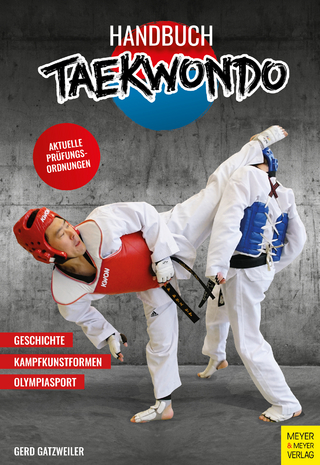
Armed Martial Arts of Japan
Swordsmanship and Archery
Seiten
1998
Yale University Press (Verlag)
978-0-300-04967-1 (ISBN)
Yale University Press (Verlag)
978-0-300-04967-1 (ISBN)
- Titel ist leider vergriffen;
keine Neuauflage - Artikel merken
This history of Japanese armed martial arts focuses on traditions of swordmanship and archery from ancient times to the present. The author examines the transformation of these fighting skills into sports, and explores the modern teaching, ritual, and philosophy of archery and swordsmanship.
This history of Japanese armed martial arts focuses on traditions of swordmanship and archery from ancient times to the present. The author provides an overview of martial arts in Japanese history and culture, then closely examines the transformation of these fighting skills into sports. He discusses the influence of Western athletic tradition on the armed martial arts as well as the ways the martial arts have remained distinctly Japanese. During the Tokugawa era (1600-1867), swordmanship and archery developed from fighting systems into martial arts, transformed by the powerful social forces of peace, urbanization, literacy, and professionalized instruction in art forms. Hurst investigates the changes that occurred as military skills that were no longer necessary took on new purposes: physical fitness, spiritual composure, character development and sport. He also considers Western misconceptions of Japanese martial arts and argues that, contrary to common views in the West, Zen Buddhism is associated with the martial arts in only a limited way. The author concludes by exploring the modern organization, teaching, ritual and philosophy of archery and swordmanship.
This history of Japanese armed martial arts focuses on traditions of swordmanship and archery from ancient times to the present. The author provides an overview of martial arts in Japanese history and culture, then closely examines the transformation of these fighting skills into sports. He discusses the influence of Western athletic tradition on the armed martial arts as well as the ways the martial arts have remained distinctly Japanese. During the Tokugawa era (1600-1867), swordmanship and archery developed from fighting systems into martial arts, transformed by the powerful social forces of peace, urbanization, literacy, and professionalized instruction in art forms. Hurst investigates the changes that occurred as military skills that were no longer necessary took on new purposes: physical fitness, spiritual composure, character development and sport. He also considers Western misconceptions of Japanese martial arts and argues that, contrary to common views in the West, Zen Buddhism is associated with the martial arts in only a limited way. The author concludes by exploring the modern organization, teaching, ritual and philosophy of archery and swordmanship.
| Erscheint lt. Verlag | 21.8.1998 |
|---|---|
| Zusatzinfo | 21 b&w illustrations |
| Sprache | englisch |
| Maße | 156 x 234 mm |
| Gewicht | 490 g |
| Themenwelt | Sachbuch/Ratgeber ► Sport ► Kampfsport / Selbstverteidigung |
| Geisteswissenschaften ► Geschichte | |
| ISBN-10 | 0-300-04967-6 / 0300049676 |
| ISBN-13 | 978-0-300-04967-1 / 9780300049671 |
| Zustand | Neuware |
| Haben Sie eine Frage zum Produkt? |
Mehr entdecken
aus dem Bereich
aus dem Bereich
der Umgang mit Adrenalin; mentale Stärke, Motivation und …
Buch | Hardcover (2024)
Leopold Stocker (Verlag)
25,00 €
Techniken, Prinzipien, Konzeption
Buch | Softcover (2023)
Meyer & Meyer (Verlag)
32,00 €


